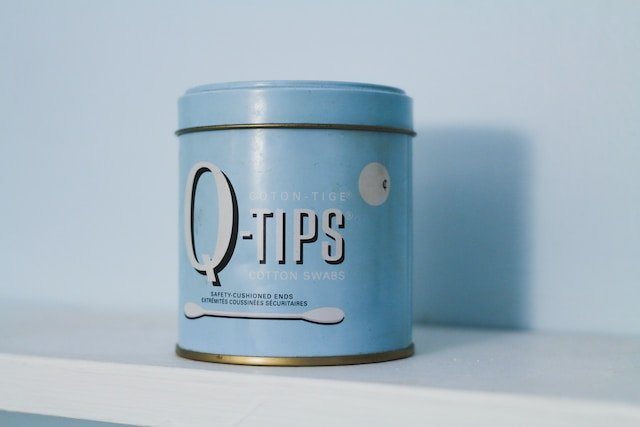In the quiet hours of the morning, as the world stirs awake, Mark, a middle-aged marathon runner, feels a sharp reminder of the condition that has grounded his strides – plantar fasciitis. Like countless others, he experiences the characteristic heel pain that marks this common affliction. However, Mark’s story takes a hopeful turn upon discovering a range of topical treatments, from over-the-counter to prescription creams, promising relief from the relentless discomfort. This narrative isn’t just Mark’s; it mirrors the journey of many looking for solace in the form of a plantar fascia cream.
What is Plantar Fasciitis?
Plantar fasciitis, a condition characterized by the inflammation of the plantar fascia – the thick band of tissue that runs across the bottom of your foot and connects your heel bone to your toes – affects approximately 2 million people each year in the United States alone. Sufferers often describe the pain as being most intense with their first steps in the morning or after long periods of rest, making even simple tasks daunting.
Over-the-Counter (OTC) Plantar Fascia Cream
Over-the-counter (OTC) creams for treating plantar fasciitis focus on providing relief from pain and inflammation. These topical treatments are widely used due to their accessibility and the minimal risk of side effects when used as directed. Here are several types of OTC creams that can be beneficial for individuals suffering from plantar fasciitis:
- Anti-inflammatory Creams: These creams contain ingredients like ibuprofen or diclofenac (in countries where available OTC) and work by reducing inflammation directly at the site of pain. They can be particularly effective for managing flare-ups.
- Pain-Relieving Creams: Containing ingredients such as menthol, camphor, or capsaicin, these creams create a cooling or warming sensation that can temporarily distract from the pain. Menthol creams are popular for their immediate cooling relief, while capsaicin creams may reduce pain sensations over time by depleting the local neurotransmitters that transmit pain signals.
- Arnica Creams: Made from the arnica montana flower, these natural remedies are touted for their anti-inflammatory and pain-relieving properties. While scientific evidence on their effectiveness is mixed, many users report relief from swelling and pain with regular use.
- Magnesium Creams: Magnesium is essential for muscle health and can be absorbed through the skin. Creams containing magnesium may help to relax the muscles around the plantar fascia, reducing tension and pain.
- CBD Creams: Creams infused with cannabidiol (CBD) are becoming increasingly popular for managing pain and inflammation. CBD is believed to interact with the body’s endocannabinoid system to reduce pain perception and inflammation, though more research is needed to fully understand its effectiveness for plantar fasciitis.
When selecting an OTC cream for plantar fasciitis, it’s important to consider the specific symptoms being experienced and any personal sensitivities to ingredients.
Additionally, while these creams can provide symptomatic relief, they should ideally be used in conjunction with other treatments such as stretching exercises, proper footwear, and orthotic supports for the best overall management of plantar fasciitis.
Consulting with a healthcare provider can also provide guidance tailored to an individual’s specific condition and needs.

Prescription Plantar Fascia Cream
Prescription creams for treating plantar fasciitis offer stronger alternatives to over-the-counter options, targeting inflammation and pain more effectively due to their higher concentrations of active ingredients.
These topical treatments are often recommended for individuals who have not found sufficient relief from OTC products or who require more potent medication to manage their symptoms.
Here are some commonly prescribed topical treatments for plantar fasciitis:
- Topical Non-Steroidal Anti-Inflammatory Drugs (NSAIDs): These creams contain higher doses of NSAIDs like diclofenac. They work by directly targeting inflammation at the site of pain, reducing swelling and discomfort. Diclofenac gel (e.g., Voltaren gel, now available OTC in some locations, but stronger concentrations may still require a prescription) is a popular choice.
- Compounded Creams: Compounded creams are customized medications created by pharmacists to meet the specific needs of an individual patient. For plantar fasciitis, a compounded cream might include a combination of medications such as a muscle relaxant, an anti-inflammatory drug, and a local anesthetic to provide targeted pain relief. Ingredients like gabapentin or amitriptyline may be added for their nerve pain-relieving properties.
- Corticosteroid Creams: Although less common in cream form for plantar fasciitis, topical corticosteroids can be prescribed to reduce severe inflammation. However, due to potential side effects with long-term use, such as skin thinning, they are typically used sparingly and for short durations.
- Capsaicin Creams: Prescription-strength capsaicin creams offer a higher concentration of capsaicin than their OTC counterparts. Capsaicin works by depleting substance P, a chemical involved in transmitting pain signals to the brain, thereby reducing pain sensations over time.
- Lidocaine Patches or Gels: While not a cream, prescription-strength lidocaine patches or gels can be applied to the affected area to provide topical numbing of the nerve endings, offering temporary relief from pain. These are particularly useful for individuals who experience significant pain but may not tolerate oral NSAIDs well.
It’s important to use prescription creams under the guidance of a healthcare provider, as they can assess the suitability of a specific treatment based on the severity of your symptoms and any other health conditions you may have.
Additionally, combining these treatments with a comprehensive treatment plan—including physical therapy, proper footwear, and orthotic devices—can offer the best approach to managing and overcoming plantar fasciitis.

Avoiding Common Mistakes
When considering plantar fasciitis pain relief cream, it is crucial to avoid wasting money on ineffective products that do not address the painful condition effectively. Additionally, refrain from purchasing creams that provide inadequate support for the arch of the foot, as this can exacerbate the problem.
Be cautious of heel pain relief cream without proper support for heel spurs and plantar fasciitis pain, as these may not offer the necessary relief. It is essential to avoid products with inconsistent information on their packaging, including conflicting ingredient lists and claims about natural ingredients.
Lastly, refrain from using foot cream for plantar fasciitis if the product packaging lacks vital information, as this could indicate a lack of transparency and quality.
Steps for Applying Plantar Fascia Cream
When using plantar fascia cream, start by applying it directly to the bottom of your foot for relief from the pain associated with plantar fasciitis.
Next, gently massage the pain relief cream onto the affected area to experience its soothing effects. For additional support, consider gently rubbing the plantar fasciitis treatment cream onto the arch of your foot.
Targeting the affected areas directly with the plantar cream can help alleviate the pain caused by plantar fasciitis.
Lastly, smooth the foot pain cream onto the heel bone for further relief from discomfort and tenderness. These simple steps can help you effectively apply plantar fascia cream for optimal pain relief and support.

Tips for Maximizing Effectiveness
Maximizing the effectiveness of plantar fasciitis pain relief cream involves strategic combinations. Pairing the cream with supportive shoes delivers optimal relief by addressing pain at the bottom of the foot.
Additionally, combining the cream with orthotic inserts offers extra arch support and further alleviates discomfort.
Wearing comfortable footwear alongside the cream provides relief and enhances overall comfort. Integrating foot cream with foot roller exercises effectively reduces foot pain and aids in recovery.
Moreover, using the cream in conjunction with physical therapy supports comprehensive relief. By utilizing these versatile combinations, individuals can effectively manage regular heel pain and enhance their overall foot health.
Combining Plantar Fascia Cream with Lifestyle Adjustments
Lifestyle adjustments can greatly complement the use of plantar fascia cream in managing plantar fasciitis. Some lifestyle changes to consider include dietary modifications for reducing inflammation, incorporating foot-strengthening exercises, and using supportive footwear with memory foam or oolala sandals.
Additionally, regular use of a theraband foot roller or a tennis ball can provide relief at the bottom of the foot. Many individuals have found relief from plantar fasciitis by combining plantar fascia cream with these lifestyle adjustments.
Remember to consult with ankle specialists or podiatric medical associations for personalized advice.
Dietary Changes for Better Foot Health
To promote better foot health, consider adjusting your diet to include anti-inflammatory foods like fatty fish, leafy greens, and berries, which can help reduce inflammation in the feet. Additionally, increasing your intake of calcium and vitamin D can contribute to stronger bones and overall healthier feet.
On the other hand, it’s advisable to limit the consumption of processed foods, sugar, and caffeine, as these can exacerbate inflammation and negatively impact circulation. Maintaining adequate hydration is also essential for keeping the tissues in your feet healthy and preventing cramping.
For personalized dietary recommendations aimed at supporting foot health, consulting a nutritionist or healthcare professional would be beneficial. These adjustments can positively impact foot health, contributing to a more comfortable and active lifestyle.
Exercises to Strengthen Foot Muscles
To strengthen foot muscles, you can perform various exercises. Start with toe curls by flexing your toes in and out while keeping your foot flat on the ground.
Another effective exercise is arch lifts, which involve lifting the arch of your foot by rolling onto the balls of your feet. Heel raises are also beneficial for strengthening foot muscles; simply lift your heels off the ground while keeping your toes down.
You can also do marble pickups using your toes to pick up and move small objects like marbles, or ankle rotations to improve flexibility and strength. Additionally, resistance band exercises can be used to strengthen the muscles in your feet and ankles, ensuring overall foot health and strength.

Can Plantar Fascia Cream Completely Cure Plantar Fasciitis?
While plantar fascia cream can help alleviate symptoms like pain and inflammation, it’s important to note that there is no complete cure for plantar fasciitis. This condition is chronic, so using cream in conjunction with other treatments like stretching and physical therapy may yield the best results. Always consult a healthcare professional before trying new treatments.
How often should you use plantar fascia cream to see results?
To achieve noticeable results in reducing foot pain, use plantar fascia cream consistently according to the product label. Most creams recommend applying it 2-3 times a day. The severity of the pain may also determine the frequency. If the pain persists, consult a healthcare professional.
How long does it take for plantar fascia cream to start working?
The effectiveness of plantar fascia cream can vary from person to person. While some may experience relief within a few days, others may need to use it for a longer period. It is crucial to follow the product’s instructions and apply regularly. If there is no improvement after several weeks, consult a healthcare professional.

Conclusion
In conclusion, while plantar fasciitis can be a challenging condition, the use of topical creams, whether over-the-counter or prescription, offers a promising avenue for relief. Coupled with a holistic approach to treatment, these creams can help sufferers reclaim their steps and enjoy a life free from the constraints of heel pain.
As we continue to explore and review the effectiveness of various treatments, one question remains: What steps will you take toward finding your path to relief?
I hope you found this blog helpful and please feel free to comment and share.
Thanks for reading!
 | Tracy J. Founder, The heel GP |
